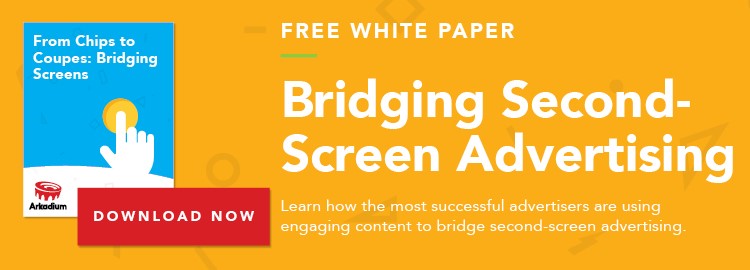What Virtual Reality Means for Digital Publishers

Virtual reality, a three-dimensional computer generated experience where users can interact with and view content via special goggles, is revolutionizing the way digital publishers are creating content for and communicating with their audiences.
Abi Mandelbaum, CEO and cofounder of YouVisit, explains, “What separates virtual reality from any other form of communication is the fact that you’re giving viewers the opportunity to explore and control how they engage with the experience, making it customized to each person.”1
And now, a perfect storm of consumer interest, coupled with technological advancement, has placed virtual reality on the verge of finally becoming a mainstream media format.
Virtual reality’s market awakening is brought on by a large push from some of the world’s largest tech companies as they develop their own googles and infrastructure. Companies such as Oculus (acquired by Facebook) and Samsung have invested heavily in the development of their own goggles. Similarly, Facebook, Google/YouTube, and Samsung have already embedded virtual reality streaming capabilities into their platforms for easier consumption and distribution.
As expressed by YouTube’s head of content and business operations Robert Kyncl, “We don’t know how long virtual reality is going to take and how large it’s going to be. But we know it’s somehow going to play an important role, and we, therefore, must have focus on it and have people working on it.”2
Indeed, consumers are ready to embrace virtual reality.
An AOL study found that 62% of consumers are familiar with virtual reality, with 64% believing that consuming video content through a headset will be as common as viewing a clip on a smartphone within the next few years.3 And, according to Gartner, 25 million virtual reality headsets are projected to be in consumer hands globally by 2018.4
Recognizing this growing interest, early adopters are well on track with creating virtual reality content.
To promote their new virtual reality app, The New York Times recently mailed over 1 million Google Cardboard headsets to their Sunday paper subscribers. Perhaps not surprising, the app is currently the publisher’s most successful app launch to date, with over 600,000 downloads.5
Find out how engaging content –including VR- is the answer to ad blocking woes.
Following the New York Times’ success, several publishers including the BBC, The Guardian, CNN, Gannet, Discovery, and countless others are now emphasizing the importance of virtual reality in bringing their audiences to the scene of every story and event.
For instance, one only needs to look at the 2016 Rio de Janeiro Olympics.
The Financial Times has created four four-minute virtual reality films called “Hidden Cities”, which explore the culture and social impact of the Olympics on Rio. With the help of Google, the publisher has supplied 35,000 Cardboard headsets to its viewers.6
Similarly, NBC is getting involved by producing over 100 hours of virtual reality footage of the Olympics, including the opening and closing ceremonies, which can be viewed on Samsung Gear VR. And lastly, The BBC is producing virtual reality Olympic coverage and has it available on their virtual reality app.7
Being bellwethers, the jury is out on how users are consuming and engaging with virtual reality, as well as the value to the publisher. But one thing is for certain: all signs suggest consumers are ready for this new form of content.
1. King, Jen. “Tag Heuer Puts Horologists in Driver’s Seat via NYT VIRTUAL REALITY App Content.” Luxury Daily. N.p., 28 Mar. 2016. Web. 08 Aug. 2016.
2. Leon, Harmon. “Virtual reality (finally) Gets Real.” Digiday. N.p., 06 July 2015. Web. 08 Aug. 2016.
3. Johnson, Lauren. “After Experimenting With 360-Degree Storytelling, Publishers Are Going All-In on VR.” Adweek. N.p., 02 May 2016. Web. 8 Aug. 2016.
4. Neff, Jeff. “How Virtual reality Could Change Shopper Marketing, B2B and More.” Advertising Age Digital. N.p., 06 July 2015. Web. 08 Aug. 2016.
5. IBID
6. Davies, Jessica. “Game on: Financial Times makes its VIRTUAL REALITY debut for Rio Olympics.” Digiday, 5 Aug. 2016.
7. Kanter, Jake. “Here’s how the newest technology is changing how we watch the Olympics.” Business Insider. 3 Aug. 2016.


